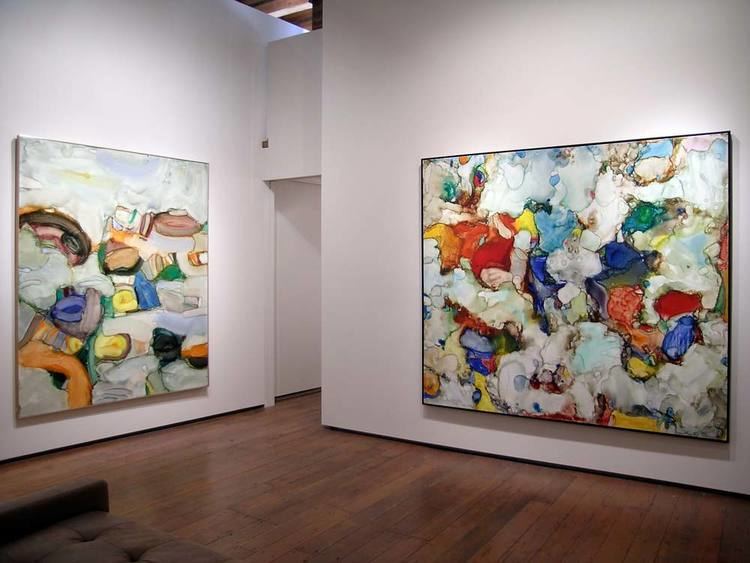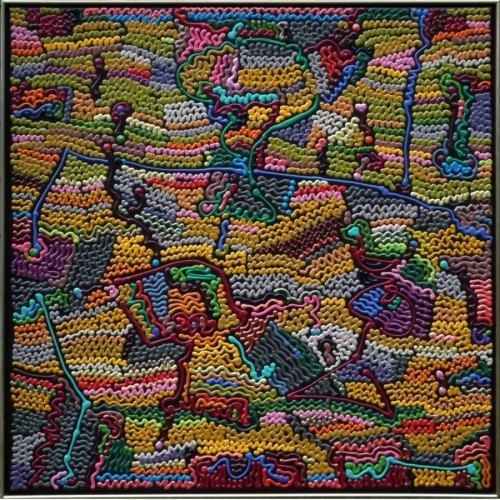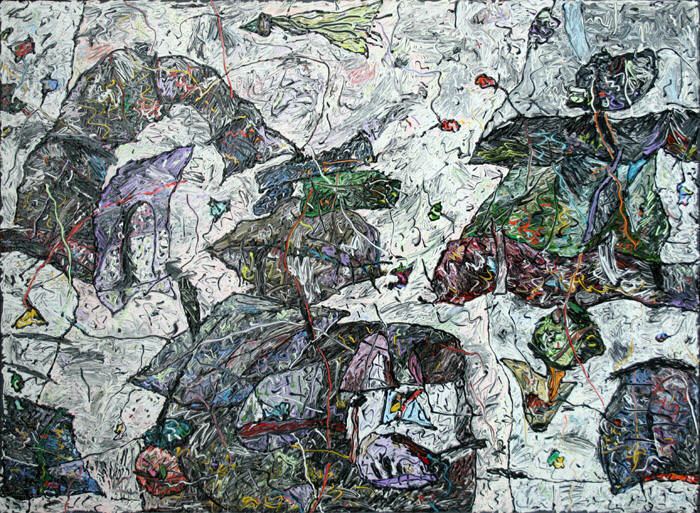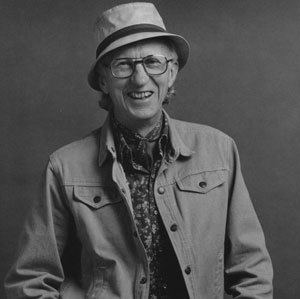Name Alden Mason Education University of Washington | Role Artist | |
 | ||
Died February 6, 2013, Seattle, Washington, United States Books Alden Mason: A Collection of Paintings and Poems | ||
Alden Mason (1919 - February 6, 2013) was a widely traveled American painter, particularly noted for his controversial murals.
Contents
Early life

Mason was born in the summer of 1919 in Everett, Washington. Mason was raised by a protective mother and is self described as "a small, skinny kid who couldn’t see" (it was not until Mason’s second year of college that he discovered he was in need of glasses). As a young boy, growing up as an outsider, he spent most of his time by himself outdoors bird watching, hiking, and exploring. He recalled the moment he knew he would be an artist, a little sparrow alighted his fingertip, staying for a few seconds to look into his eyes. At age twelve the aspiring artist found himself trapping muskrats to earn money for mail-away cartooning lessons. "I felt guilty trapping all those muskrats, but I loved cartoons, with figures jumping, hopping and smooching. They were having more fun than I was. They lived in a brighter world." Throughout his artistic career evidence of Mason’s time on the Skagit farm remain in his improvisational paintings; animals and native plants such as sparrows and tulips remain themes to the present day.
Travel

"Although the imagery and media used by Mason have gone through many changes over the years, his paintings always exhibit exuberance and inventiveness in form, color, and style. Mason drew inspiration from Arshile Gorky, Willem de Kooning, Joan Miro, Pablo Picasso, and the many different cultures he encountered while traveling." Mason traveled abroad to experience exotic flora and fauna. He said, "I like to go to the tropics because there are hundreds of kinds of birds, beautiful tropical birds of all kinds from parrots to parakeets to toucans." hi
Mason’s travels took him abroad to many different countries. Travels to South and Central America translated directly into his large Squeeze Bottle paintings of 1978–1980s. Stylized South American mola and brilliantly colored Huichol Indian yarn paintings from Mexico were later reinterpreted in paint. Roaming the earth to mostly indigenous cultures let Mason see elements of the world to record later in paintings as an extended, personal, travel journal.

One of the most influential trips of Mason’s career happened in 1989 when he took a trip to Papua New Guinea to spend six weeks with the Huli tribe at the age of 70. There he heard stories from the tribesmen late into the night. A particular memory from this trip is that a spirit bird (would forever be painted as a blackbird lingering in background) called to the Hulis to quit telling Mason tribe secrets. This type of travel fed Mason’s interest in primitive arts, bird watching, and tribal cultures. His personal experiences with them impacted his art in both style and content. As a result, in the 1990s Mason recreated spirit birds, body design, and the rhythm of tribal dances in his paintings. In his more contemporary work there is a longing for exotic visits and relics of his travels show up in his painting.
Teaching and the University of Washington

After graduating from high school in 1937, Mason studied entomology at the University of Washington (UW) in Seattle. While Mason was hitchhiking home from UW, the elder artist Ray Hill gave him a ride to the Skagit Valley, stopping by Deception Pass for an impromptu watercolor lesson. This encounter is what turned Mason’s head from science to art. Very soon after he took his first art class, learning watercolors from Ray Hill. "It was really exciting to me; [with my major] I was already interested in the landscape and the things that inhabit the landscape." He received his BFA in 1942 and MFA in 1947. After graduating from the UW with his MFA, Mason was offered a job teaching at the UW School of Art. Mason continued as a professor at the UW School of Art from 1949 until 1981, inspiring young artists and friends in the Pacific Northwest. Mason taught many professional artists from the Northwest, most notably Chuck Close, Roger Shimomura and Gene Gentry McMahon.
Early career and influences, 1950s - 1970s
Mason first began serious artistic pursuits when he arrived at the UW in 1938. "I did them [watercolors] so easily and everybody has so much trouble with watercolor." The most attractive properties of watercolor for Mason were the same that made the medium difficult to master: fluidity of paint and permanence of each brush stroke. For Mason, watercolor allowed him to improvise, sketching and at the same time painting the final composition. Though his teacher and mentor Hill exemplified how to properly paint landscape, Mason’s pursuit of watercolors steadily moved away from his own small controlled landscapes to larger, free-style abstractions.
As early 1970 passed, Mason’s craving to work on a substantially larger scale than watercolor enabled him to make the switch to oil paint. He diluted his oils with Damar varnish and achieved large paintings that translated the glassy, pooling nature of watercolor into large-scale color-field paintings. This achievement marks the beginning of the famed Burpee Garden Series which takes its name from the Burpee Seeds catalog Mason grew up with as a kid. He felt the way the colors of oil paints merged on the canvas had a direct correlation with the growth and germination of seeds as they became plants. With this series Mason finally started getting the attention from New York he had always wanted. In 1973 Mason went to New York City with his Burpee Garden Series at the invitation of his longtime friend and past student Chuck Close. At this time Mason became acquainted with Alan Stone, an art dealer in New York who represented his work through the late 1970s. The Greg Kucera gallery later described these works, saying....
"With their audacious color, surprising scale, and exuberant abstraction, they represent a break with the drably colored or poetic narratives that had typified painting here following the advent of the Northwest School… In the paintings titled the ‘Burpee Garden’ series Mason produced six by seven foot paintings in a color range not previously seen in the Northwest. Created from 1970 to 1976 this short period produced some of the most influential and groundbreaking works ever made in Seattle."Work on the scale of the Burpee paintings was not sustainable for the artist. Mason would often start a painting at 9 a.m. and work it all the way to the finish at 2 a.m. early the next morning. In addition to painting, Mason spent time on large drawings with oil stick and graphite on paper. With these he experimented, washing down his hard edged lines using turpentine and mostly imaging large heads. Round-the-clock painting stints left Mason exhausted physically and emotionally. Another serious problem with the Burpee series was the adverse effect on his health. Poor ventilation and too many hours spent breathing varnish fumes threatened Mason’s lungs and nervous system. Soon he was collapsing on a regular basis and was advised by his doctors to stop using oil based pigments.
When Mason left oil paint behind in the mid-1970s, his first thought was "can I do the same thing in acrylic that I did in oil?" To develop his ideas, he spent some time working on large paper pieces in search of his voice with this new medium. His works on paper during this period were drawn with a chopstick dragging acrylic paint and painted with thin, gestural washes on paper that had been painted black. The first acrylic works on canvas were done in a similar fashion to the oil Burpees; he poured thin acrylic paint onto horizontally oriented, white primed canvas hoping to produce the same effects the Burpees had realized.
Mid-career and influences, 1980s – 1990s
By the 1970s Mason had abandoned white backgrounds and began his work by painting black over the entire canvas or sheet of paper, then proceeding with the rest of his painting. This process gave the desired pop to the brilliant acrylic colors he was using. The artist began chopstick drawings on black grounds and followed with drawings of softer colors during the Squeeze Bottle period. Mason's drawing at this time took on a different feel also, as he began testing with oil sticks washing his marks with turpentine and smudging them to create a filmy watercolor feel.
While Mason was spending such a significant amount of energy on drawing, he went to friend Robert Sperry’s pottery studio and was given a squeeze bottle to decorate a pot for his mother. "We used this squeeze bottle thing…I liked it because it would go fast and would move with this energy... I gradually became more obsessed with it and more obsessed and then gradually covered the whole surface. So it changed from a drawing into a painting. The drawing part was there but it disappeared into this sort of all-over pattern, kind of textile-like look, I suppose…"
By the mid-1980s Mason started painting with squeeze bottles exclusively; it seemed he had finally found a way to combine his drawing with paintings, and the Squeeze Bottle series was born. Using a squeeze bottle and slightly diluted acrylic paint, Mason drew in raised lines and the overall feeling of each work became tapestries of acrylic paint. In some groups, Mason mixed gold, copper, and silver metallic into his colored paints producing canvasses that looked like they were woven together with metallic threads of color. At this time, his travels to Mexico and Central America influenced the iconography of his image with either patch worked blocks of design like a mola, or overall patterns like Mexican rugs. They also incorporated figures from his drawings, be it critters from the Skagit Valley or portraits of his immediate friends and family. After a trip to New York in the 1980s where he saw a large exhibition of Mark Rothko’s work, Mason’s color changed to become darker and more brooding for a short time.
It was during this Squeeze Bottle period that Mason was commissioned by the State of Washington to paint two murals for the Senate Chambers in Olympia, Washington. See Controversy in Olympia over the Senate Chamber Mural
Following the Squeeze Bottle series Mason again reinvented his technique. Big Heads of the late 1980s achieve the rhythm of his previous Squeeze Bottle paintings with the raw, cartoon style of his drawings. Mason’s large human heads were filled with walking fish, bugs, flowers, and birds; his deserted entomology degree and world travels to New Guinea and Australia come to life in this series. Mason says of this work "I find the interior of a human head, metaphysically speaking a fascinating subject."
As the decade progressed into the 1990s, Mason branched out from Big Heads and began including the full body in his paintings. Mason’s work at this time lets his figures literally dance. The sketchy black outline of each character gives the feeling that they are jiving to Mason’s symphony of texture and color. Once again experimenting with acrylic paint application, Mason took the raised line of the Squeeze Bottle pieces, his drawings, Big Heads, and a chop stick; combining them so that his line was less precise and his drawn characters were most important. Mason sketched with the chopstick on canvas, smudging the black or white line and adding splashes of vibrant color; he then filled in the backgrounds with a monochromatic palette on a scale averaging 60" x 50". Figure focused work occupies Mason throughout his later career and the mid to late 1990s found Mason expressing his interests and hobbies in paint. His studio is "chock-a-block with bird watching books, some tribal carvings from halfway around the globe, and a couple of framed carcasses of six inch long bugs." For Mason, each painting told a story; be it of his travels friends, family, or of the lore of his home region the Pacific Northwest.
2013 – death
The free-formed garish figures and spirit birds of Mason’s earlier works made their transition to contemporary pieces; this time dressed up in a brand new medium. Ever experimental, Mason’s contemporary work is based on earlier work with new additions. Contemporary works are composed on a foundation of watercolor in the style of Burpees. This watercolor peeks through thick oil stick and India ink which form windows in the shape of big heads, whimsical writing and characters from farm days past. Mason's last work covers the entire paper with design. "Each new painting promises to better translate his observations into a painterly language…I am [continually] reminded that his lack of complacency keeps him vital." Mason died on February 6, 2013 in Seattle, Washington. He was 93.
Public works
Mason’s work can be found in the collections of the Henry Art Gallery, Seattle Art Museum, Tacoma Art Museum, Museum of Northwest Art, San Francisco Museum of Modern Art, Portland Art Museum, Milwaukee Art Museum, and many private and corporate collections in the US.
Controversy at Chamber of Commerce
It was during the Squeeze Bottle period that Mason was commissioned by the State of Washington to paint two murals for the Washington Senate Chambers in Olympia. Mason's pair of enormous installations (measuring 12 feet tall at the top of the lunette and 44 feet wide for each six-panel work) completed in 1981 were cause for celebration and were the largest work executed during Mason’s entire career. After being in place for several years, the situation turned ugly in 1989 and the Senate voted to take the piece down citing it as "not site specific enough for the historic building." The interior decorator claimed it "clashed with the mauve-grey-color scheme." Mason’s lawyer, a blind arts advocate, nobly fought to keep the murals in place citing that the artist had used alternative shapes and colors to those in his normal repertoire and the piece was therefore site specific. Together, Alden Mason, Greg Kucera Gallery, Michael Spafford, Francine Seders, (Michael Spafford’s gallery representative), and lawyer Leonard Duboff with Fred Mendoza formed the "Mural Defense Fund" and fought the case very publicly but lost in the end. Mason’s murals were uninstalled and moved from Olympia to storage in 1987. Both Spafford and Mason would have preferred their work to be destroyed than to be installed elsewhere. Despite both Spafford and Mason’s objections, the commissioned pieces were moved in 1990 to Centralia College and they remain there to the present day.
Selected awards
Mayor's Art Award
In 2005 Mason received the Mayor's Arts Award from the City of Seattle and Mayor Greg Nickels. The award ceremony was held on September 2, 2005 and other recipients included David Brewster, Pat Wright, Peter Donnelly and Sara Liberty Laylin. Mason received the Northwest Legacy: Visual Arts award for his work as a Northwest painter. The honor was received for living in the region his whole life; going on to be educated and to teach at the University of Washington for over 30 years; and making his work in the City of Seattle for over 40 years.
